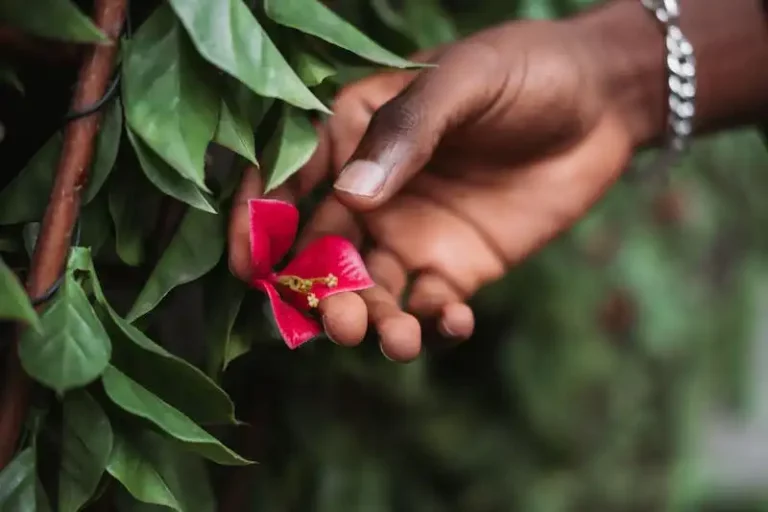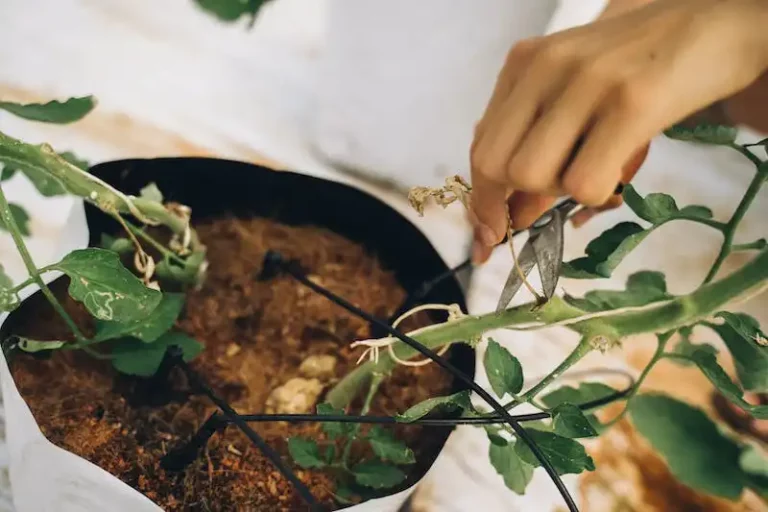If you love the refreshing taste and aroma of lemongrass, why not try growing it in your own backyard? Lemongrass, also known as Cymbopogon, is a tall perennial grass with long stalks that can grow up to 4 feet in length. This herb is native to tropical and subtropical regions, but it can be grown in cooler zones as well. Lemongrass tends to thrive best in full sunlight and fertile, well-drained soil. It can be grown in the ground or in containers, making it a versatile plant that can be easily kept and maintained.
When starting your lemongrass garden, it’s important to provide the plant with the right conditions for growth. Lemongrass requires at least 6-8 hours of direct sunlight each day, so choose a sunny spot in your yard or place it near a sunny window if you’re growing it indoors. The soil should be rich and fertile, with a pH level of 6.5 to 7.5. If your soil is poor, you can improve it by adding compost or well-rotted manure to increase its nutrient levels.
To plant lemongrass, start by digging a hole that’s about twice the size of the root ball. Place the lemongrass plant in the hole, making sure it’s level with the surrounding soil. Fill the hole with soil and lightly firm it down around the plant. Water the plant thoroughly after planting to help it settle into its new home.
Once your lemongrass is planted, it’s important to provide it with regular feeding and watering. Water the plant deeply once or twice a week, depending on the weather and the moisture levels in the soil. Lemongrass is a heavy feeder, so it will benefit from regular applications of a balanced fertilizer. Fertilize the plant every 6-8 weeks during the growing season to ensure healthy and vigorous growth.
As lemongrass grows, you can start harvesting it by snipping off the stalks as needed. The lower part of the stalk, about 2 inches above the soil level, is the most tender and edible part. Simply snip off the stalks and use them in your favorite recipes, or dry them for later use. If you’re not planning to use the lemongrass immediately, you can preserve it by freezing or drying it. Freezing is the easiest method, as it requires minimal preparation and maintains the flavor and aroma of the herb.
In conclusion, growing lemongrass is a rewarding experience that allows you to enjoy this versatile herb right from your own garden. Whether you choose to plant it in the ground or in containers, lemongrass requires proper sunlight, watering, and feeding to thrive. With some care and attention, you can enjoy the fragrant aroma and tangy taste of lemongrass in your kitchen all year round.
How to Grow and Care for a Lemongrass Plant
Lemongrass is a type of grass that is grown for its fragrant and flavorful stalks. It is a popular herb among gardeners and is commonly used in Asian cuisine for its citrusy taste. In addition to its culinary uses, lemongrass also has several health benefits, such as being a natural mosquito repellent.
If you are considering growing lemongrass in your own garden or indoors, here is a step-by-step guide to help you maximize its growth and care for the plant:
1. Choosing a Location
Lemongrass is a tropical plant that thrives in warm and sunny conditions. It can be grown both outdoors and indoors. If you live in a climate with mild winters, you can plant lemongrass directly in your garden. However, if you live in a colder climate, it is better to grow lemongrass in containers that can be moved indoors during the winter months.
2. Planting Lemongrass
To plant lemongrass from a stalk, start by selecting a fresh stalk with intact roots. Cut off the top and place the stalk in a glass of water. After a couple of weeks, roots will start to grow. Once the roots are about an inch long, you can plant the stalk in a pot or directly in your garden. Make sure to choose a location with well-draining soil.
3. Watering and Feeding
Lemongrass plants should be watered regularly to keep the soil moist, but not waterlogged. It is important to water the plant deeply to encourage root growth. Additionally, lemongrass plants benefit from regular feeding. You can use a balanced fertilizer and apply it every few weeks during the growing season.
4. Pruning and Propagating
To keep your lemongrass plant healthy, it is important to regularly prune it. This can be done by snipping off any brown or damaged leaves as well as the outer layers of the plant. Propagating lemongrass is also easy. Simply divide the plant into smaller sections using a shovel, and then replant the divisions in a new location.
5. Harvesting and Storing Lemongrass
Lemongrass can be harvested once the stalks are about one-third grown and the base is swollen. To harvest, simply use a sharp knife or scissors to cut the stalks at the base. If you are not planning to use the lemongrass immediately, it can be stored by wrapping it in a paper towel and placing it in a plastic bag in the refrigerator. Another method of preserving lemongrass is by freezing it.
In conclusion, growing and caring for a lemongrass plant is relatively easy, and it can thrive in a variety of climates. Whether you choose to grow it in your garden or as a potted plant on your windowsill, lemongrass adds a touch of beauty and fragrance to any space. Plus, it is a versatile herb that can be used in a wide range of dishes and beverages. So why not give it a try and enjoy the many benefits of growing your own lemongrass?
Adding Lemongrass Plants to Your Yard
If you want to bring a tangy and refreshing flavor to your yard, consider adding lemongrass plants. With their droopy and aromatic leaves, these grasses are not only a beautiful addition to any garden but also a versatile herb that can be used in various culinary dishes.
Before planting lemongrass, it is important to prepare the soil properly. Lemongrass plants prefer well-draining soil, so make sure to amend it with organic matter and ensure good drainage. Additionally, they require full sun to grow, so choose a location that receives at least six hours of direct sunlight per day.
When it comes to watering, lemongrass plants prefer to be kept lightly moist. Water them regularly, but make sure the soil is not waterlogged, as this can lead to rotting. During warmer periods, they may require more frequent watering.
Gardeners should also be mindful of fertilization. Lemongrass plants do not require heavy fertilization, but a light application of a balanced organic fertilizer can help promote growth. Follow the recommended guidelines on the fertilizer package to avoid over-fertilization.
If you live in a climate where temperatures drop below freezing, you may need to bring your lemongrass plants indoors for the winter. They can be grown in containers and kept on a windowsill or in a well-lit area of your home. Just make sure to provide them with enough light and water regularly.
Harvesting lemongrass is relatively simple. You can start cutting stalks once they reach a height of at least 12 inches. To harvest, simply cut the stalks close to the ground, leaving about an inch or two above the soil. The harvested stalks can be used fresh or dried for later use in recipes.
When it comes to culinary use, lemongrass lends a tangy and zingy flavor to dishes. It is commonly used in Thai, Vietnamese, and other Southeast Asian cuisines. Lemongrass pairs well with flavors like ginger, garlic, and scallions, and can be used in marinades, soups, curries, and stir-fries.
At first glance, growing lemongrass may seem intimidating, but with proper care and preparation, it is an attainable goal for any gardener. Whether you choose to plant them in the ground or in containers, lemongrass plants can add a unique and refreshing touch to your yard or kitchen.
Growing From Seed
Growing lemongrass from seed is a popular option for many gardeners. Starting from seeds allows you to experience the entire growth process and enjoy the satisfaction of cultivating your own plants. Lemongrass is a versatile herb that adds a citrusy flavor to many dishes, making it a desirable addition to any garden.
When growing lemongrass from seed, it’s important to be aware of potential problems that may arise. Lemongrass seeds can be brittle and may have a low viability rate. To increase your chances of success, it is recommended to purchase seeds from a certified source. Additionally, lemongrass seeds require a lot of sunlight to germinate and grow, so make sure they are planted in a location that receives full sun.
To propagate lemongrass from seed, start by planting them in a container filled with well-draining soil. The seeds should be planted about 1/4 inch deep and kept moist. Daily watering will help to maintain the moisture level in the soil. It usually takes two to three weeks for the seeds to germinate, but it may vary depending on the geographic location and environmental conditions.
Once the lemongrass seedlings have developed a strong root system and reach at least 6 inches in height, they can be transplanted into the garden. Plant the lemongrass divisions in a clump, maintaining the intact root ball. Lemongrass plants require nitrogen-rich soils, so consider adding a balanced fertilizer or organic matter to enhance the soil’s fertility.
Proper care is essential to ensure the successful growth of lemongrass from seed. Regularly water the plants, providing about an inch of water per week. Avoid overwatering or allowing the soil to become waterlogged, as this can lead to droopy or moldy lemongrass. Ensuring that the soil is well-drained and using a soluble, balanced fertilizer can help prevent these issues.
As lemongrass matures, it will develop clumps of stalks that can be harvested throughout the growing season. When harvesting lemongrass, cut the stalks as close to the ground as possible to promote new growth. The harvested stalks can be used fresh or preserved by freezing or drying them for later use.
In conclusion, growing lemongrass from seed is an attainable goal for gardeners. By selecting high-quality seeds, providing ample sunlight, and taking proper care of the plants, you can enjoy the tangy flavor of lemongrass in your dishes year-round.



